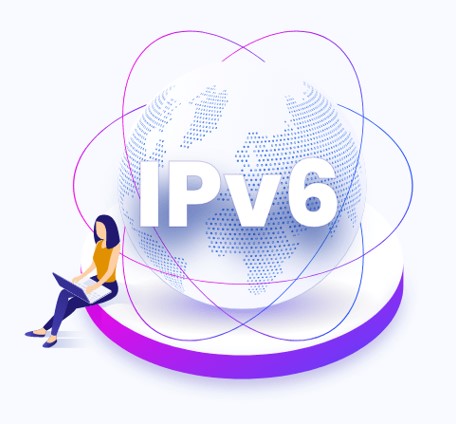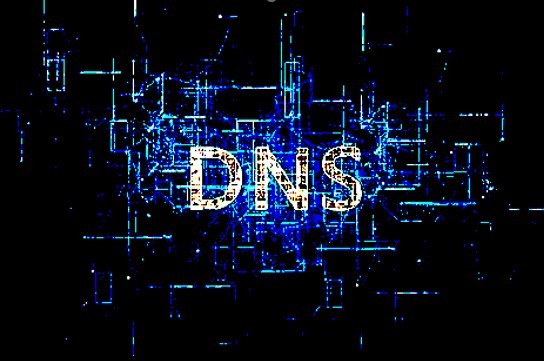Understanding IPv6: The Future of Networking
January 21, 2025

As the world becomes increasingly connected, the need for reliable, efficient, and scalable internet infrastructure has never been greater. One of the key components of this infrastructure is the IP address, which enables devices to communicate across the internet. However, the current version of IP addresses, IPv4, has limitations in terms of address space, scalability, and security. This is where IPv6 comes into play, offering a next-generation solution to these challenges.
In this blog, we’ll explore what IPv6 is, why it’s important, and the potential effects it can have on your network.
What is IPv6?
IPv6 (Internet Protocol version 6) is the most recent version of the Internet Protocol (IP), designed to replace IPv4, which has been in use since the 1980s. IPv6 was developed in response to the growing demand for IP addresses, especially as more devices connect to the internet.
IPv6 uses a 128-bit address compared to the 32-bit address used by IPv4, which dramatically increases the available address space. Specifically, IPv6 can provide approximately 340 undecillion (3.4 × 10^38) unique IP addresses, compared to IPv4’s mere 4.3 billion. This vast increase in address availability is crucial for the continued growth of the internet and the growing number of connected devices—everything from smartphones to IoT (Internet of Things) devices.
Key Features of IPv6
- Larger Address Space: IPv6 addresses are expressed as 8 groups of 4 hexadecimal digits, separated by colons (e.g., 2001:0db8:85a3:0000:0000:8a2e:0370:7334). This enables a virtually unlimited number of devices to be assigned a unique IP address.
- Simplified Header Structure: IPv6 has a more efficient and streamlined header format compared to IPv4, reducing the processing burden on routers.
- Built-in Security: IPv6 was designed with security in mind. Features such as IPsec (Internet Protocol Security) are mandatory in IPv6, whereas they are optional in IPv4. This ensures that data transmitted over IPv6 networks is more secure.
- Auto-Configuration: IPv6 supports stateless address autoconfiguration (SLAAC), which allows devices to automatically generate their IP address without the need for a DHCP server. This reduces the overhead on network administrators.
- No Need for NAT: IPv4 networks often rely on Network Address Translation (NAT) to map private IP addresses to a single public address. In IPv6, each device can have its own unique public IP, eliminating the need for NAT, which can simplify network configuration and troubleshooting.

Why IPv6 Matters for Your Network
- Address Exhaustion: IPv4 addresses are running out, and as more devices come online, the need for new IP addresses will continue to grow. IPv6 offers a long-term solution to this problem, ensuring that your network can scale without hitting address limitations.
- Faster and More Efficient Networking: IPv6’s more efficient routing and data transmission features can lead to faster and more reliable network connections. Additionally, IPv6 can reduce the complexity of NAT and manual IP address assignment, making network management easier.
- Security Enhancements: With built-in security features, IPv6 provides better encryption and authentication mechanisms, making it more secure than IPv4. As cyber threats evolve, having a more secure network infrastructure is critical.
- Internet of Things (IoT): The explosion of IoT devices, from smart homes to connected factories, requires more IP addresses. IPv6 is essential to accommodate the massive number of IoT devices, ensuring that they can communicate seamlessly over the internet.
Effects on Your Network
Transitioning to IPv6 isn’t just about adopting a new addressing scheme. It can have several implications for your network, both positive and negative.
- Compatibility Issues
One of the most common challenges when migrating to IPv6 is compatibility with legacy IPv4 systems. Since IPv4 and IPv6 are not directly compatible, you will likely need to run dual-stack networks, which means supporting both IPv4 and IPv6 concurrently. This requires careful planning, as running a dual-stack network can increase network complexity and overhead.
- Solution: A gradual transition strategy, such as tunneling (encapsulating IPv6 traffic within IPv4 packets), can allow compatibility between the two protocols until IPv6 adoption is more widespread.
- Security Configurations
While IPv6 offers better security by default, it’s still important to configure security settings properly. The added complexity of IPv6 can sometimes lead to new vulnerabilities if not properly managed. For example, IPv6’s autoconfiguration feature can be exploited if not properly secured, potentially allowing unauthorized devices to join the network.
- Solution: Ensure that your firewalls and security devices are configured to handle both IPv4 and IPv6 traffic, and use security protocols like IPsec to protect data integrity.
- Network Equipment and Software Updates
Not all network hardware (routers, switches, etc.) and software (firewalls, operating systems) support IPv6 natively. As a result, outdated equipment may need to be upgraded or replaced. Failing to do so could result in inefficiencies, poor performance, or incompatibilities that disrupt your network’s operation.
- Solution: Audit your current infrastructure and software to identify potential gaps in IPv6 support. Prioritize upgrades or replacements for equipment that is critical to supporting IPv6.
- DNS and Routing Configuration
With IPv6, Domain Name System (DNS) configurations and routing tables must be updated. For example, DNS records for IPv6 (AAAA records) need to be configured to ensure that devices can resolve both IPv4 and IPv6 addresses. Similarly, your routing protocols need to be updated to handle IPv6 routing.
- Solution: Work with your DNS provider to ensure proper IPv6 record support and update your routing protocols to manage IPv6 traffic effectively.

What You Should Be Aware of When Implementing IPv6
- Training and Knowledge: IT staff must be trained on IPv6, including how to configure and manage IPv6 addressing, security protocols, and troubleshooting methods. IPv6 is different enough from IPv4 that proper education is essential to avoid mistakes.
- Address Planning: Proper IPv6 address planning is essential. While there are plenty of addresses available, it’s still important to segment your address space logically, just as you would with IPv4.
- Testing: Before fully implementing IPv6 across your entire network, thoroughly test your IPv6 deployment in a controlled environment. Identify potential issues early, such as conflicts between IPv4 and IPv6 routing, security gaps, or compatibility problems.
- Monitoring: Once IPv6 is in place, continuous monitoring of your network is critical. Tools like SNMP (Simple Network Management Protocol) or specialized IPv6 network management tools should be used to track performance, security threats, and traffic patterns.
IPv6 is not just a trend—it is the future of internet networking. The transition from IPv4 to IPv6 is essential for the continued growth of the internet, especially with the rapid expansion of connected devices. By understanding the key features, benefits, and challenges of IPv6, you can ensure that your network is ready to handle the demands of the future.
While migrating to IPv6 can introduce complexities, the benefits far outweigh the challenges, particularly in terms of scalability, security, and efficiency. The time to start planning your transition to IPv6 is now—don’t let your network fall behind.
Have Any Question?
Call or email Cocha. We can help with your cybersecurity needs!
- (281) 607-0616
- info@cochatechnology.com




